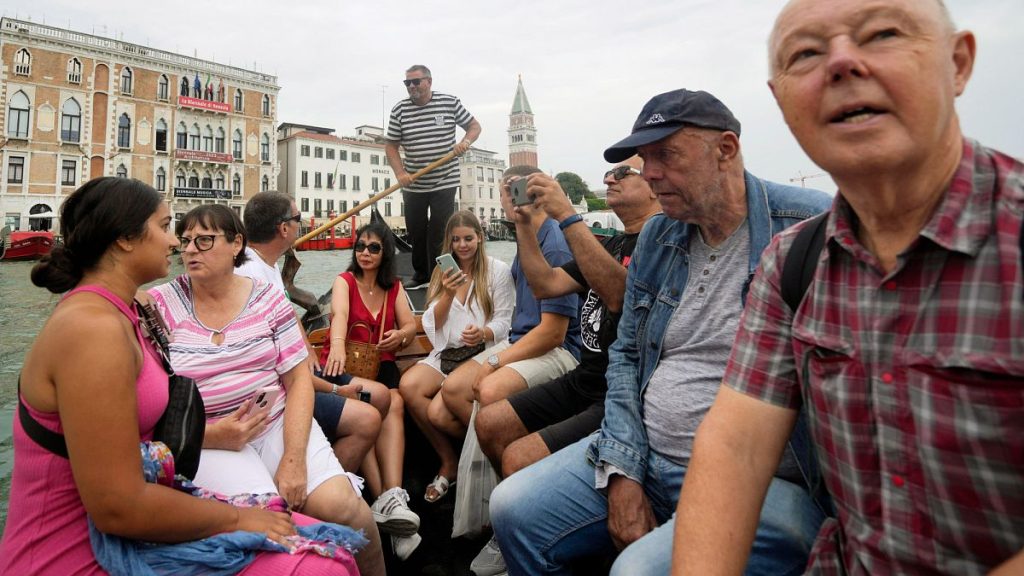Venice’s Daytripper Fee: Managing Tourism in a City Under Pressure
Venice has announced the return of its daytripper fee for 2026, expanding the program to cover 60 days throughout the spring and summer months. The fee, which was first introduced in 2024, will apply to visitors entering the historic city on weekends from April through July, during peak hours between 8:30 am and 4 pm. City officials have confirmed the system will operate on specific dates across these months, creating a structured approach to managing the flow of tourists who don’t stay overnight. While the exact fee amount for 2026 hasn’t been determined yet, the 2025 model charged €5 for those who planned ahead and reserved their visit, with a higher €10 fee for last-minute arrivals. This tiered pricing strategy attempts to encourage visitors to plan their trips in advance, allowing the city to better predict and manage daily visitor numbers.
The initiative emerges from Venice’s long struggle with overtourism, a challenge that has dramatically transformed daily life for residents. With a population that has dwindled to fewer than 50,000 people, Venice now officially has more tourist beds than residents—a sobering milestone that activists highlighted last summer. This imbalance has real consequences for those who call the floating city home. Essential services become strained, the city’s narrow alleyways and water buses grow congested with visitors and their luggage, and more residents feel compelled to relocate to the mainland. The fee system represents Venice’s pioneering attempt to address these issues, with Councillor Michele Zuin describing it as “a useful tool for managing tourist flows and ensuring a better balance between residents and visitors.” Venice stands as the first city in the world to implement such a comprehensive day visitor management system, attracting international attention for its innovative approach.
The system works through a digital reservation platform where daytrippers must register their visit. Upon registration, visitors receive a QR code that serves as their access permit, which is checked at seven strategic entry points throughout the city, including the main train station. The policy includes numerous exemptions to protect the interests of locals and those with legitimate connections to the city. Residents and Venetian-born visitors are naturally exempt, as are students and workers who need to enter the city regularly. Importantly, overnight tourists who have hotel or lodging reservations also don’t pay the daytripper fee, as they already contribute through a separate lodging tax included in their accommodation bills. This approach aims to specifically target “hit and run” tourism—visitors who spend only a few hours in the city, contributing minimal economic benefit while adding significantly to congestion.
Despite these efforts, the initial results from the fee implementation show mixed outcomes. Data indicates that day visitor numbers decreased only marginally compared to previous years. In 2025, the daily average of visitors paying the daytripper fee was 13,046, compared to 16,676 in 2024—a modest reduction that city officials acknowledge aligns with a broader regional decline in tourism. Even more telling was the experience on the busiest day of the season, Friday, May 2, when nearly 25,000 visitors paid the daytripper fee—a number equivalent to more than half of Venice’s resident population. These figures suggest that while the fee may have some impact on visitor decisions, it has not yet created the dramatic shift in tourism patterns that many residents had hoped for.
The Venice experiment represents a delicate balancing act between preserving tourism, which remains essential to the local economy, and protecting the city’s unique cultural heritage and livability. By implementing the fee system, Venice authorities are attempting to transform the city’s relationship with tourism from a volume-based model to one that prioritizes quality and sustainability. The extension of the program into 2026 signals the city’s commitment to this approach, even as it continues to evaluate and refine the system. For tourists planning future visits, the fee represents a relatively small addition to their travel budget, but it serves as an important reminder of the impact their presence has on this extraordinary but vulnerable World Heritage site.
As cities worldwide grapple with similar challenges of overtourism, many are watching Venice’s experiment closely. The daytripper fee represents just one potential solution in a complex puzzle of sustainable tourism management, but its implementation offers valuable lessons about the practical challenges of regulating visitor access to popular destinations. For Venice itself, the fee system is not presented as a complete solution but as part of an ongoing, experimental approach to a problem that has developed over decades. As the program evolves and expands in the coming years, both residents and city officials hope it will contribute to a more sustainable future for one of the world’s most beloved—and most visited—urban treasures. Only time will tell whether this innovative approach will help preserve Venice not just as a tourist destination, but as a living, breathing city for generations to come.


